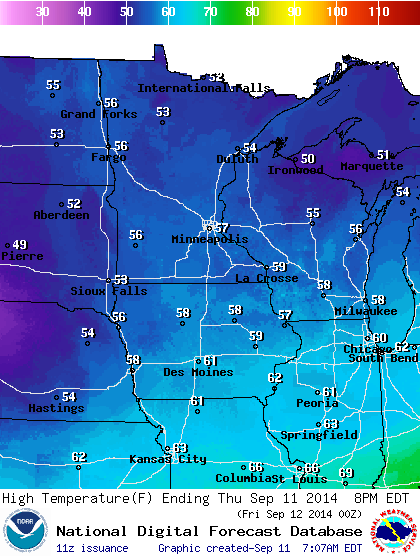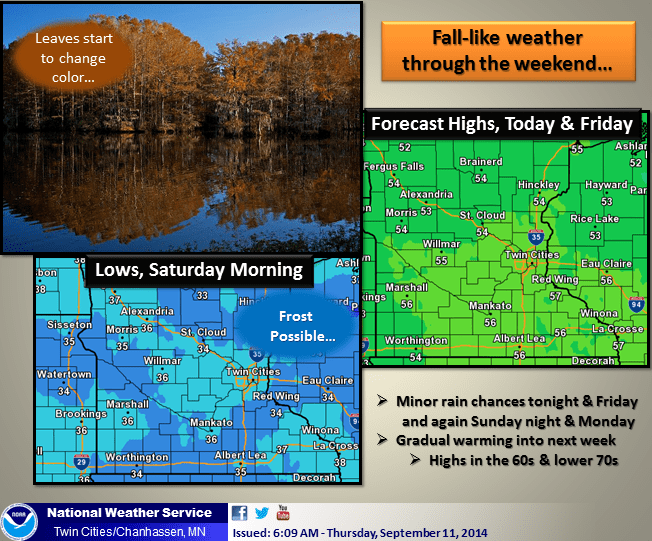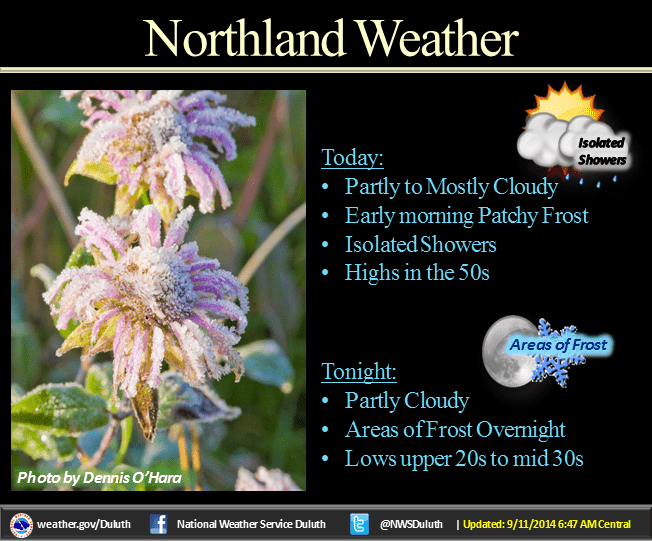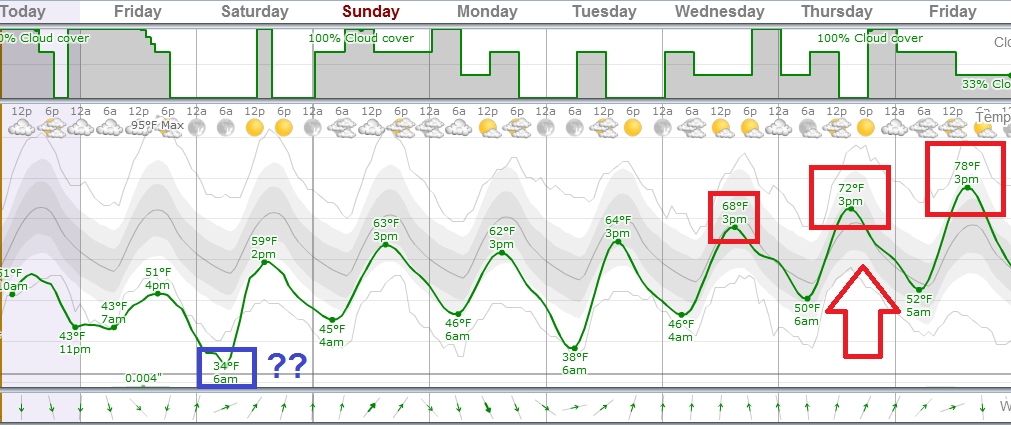Oct-ember chill, solar storm may trigger auroras

One look at the weather maps today and you can tell there's way too much blue for September.

Yes folks, 57 degrees in the metro is the average high for Oct. 19.
Northern Minnesota posted some of the first sub-freezing temps of the season this morning. Yes, that's 29 frosty degrees in Embarrass and 28 in Orr.

Get used to it. Our October chill level lasts into the first part of the weekend. Temps bottom out Saturday morning with frost likely everywhere outside the inner metro core.
Create a More Connected Minnesota
MPR News is your trusted resource for the news you need. With your support, MPR News brings accessible, courageous journalism and authentic conversation to everyone - free of paywalls and barriers. Your gift makes a difference.

The core of the coldest air and frost coverage passes over northern Minnesota, as usual.

The good weather news? Temps begin to moderate by the weekend. It looks like 70s will return next week.
Here's the version of events over the next week from the European Centre for Medium-Range Weather Forecasts model.

Aurora watch: Solar storm may trigger northern lights

Two massive solar flares from sunspot AR2158 have sent earthward directed coronal mass ejections (CME) this way.

The solar blasts increase the chances of communication interruptions and northern lights this week.
Here's more from one of my favorite astronomy sites, spaceweather.com.
STORM WARNING: A pair of CMEs is heading for Earth. The two solar storm clouds were launched on Sept. 9th and 10th by strong explosions in the magnetic canopy of sunspot AR2158. NOAA forecasters estimate a nearly 80% chance of polar geomagnetic storms on Sept. 12th when the first of the two CMEs arrives. Auroras are in the offing, possibly visible at mid-latitudes before the weekend.
Keep an eye out for northern lights this week!